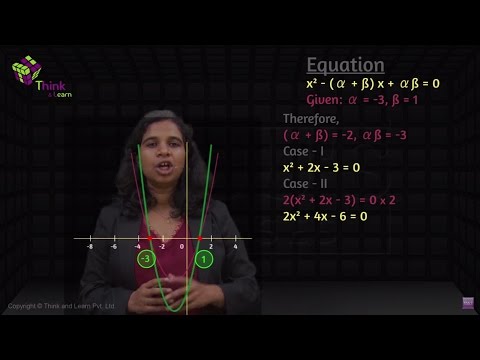
Quadratic Equation: Sum and Product of Roots:
A general quadratic equation is given by
The term
If the roots of this equation are given by
Sum of Roots
Thus, the sum of roots of a quadratic equation is given by the negative ratio of coefficient of
Let us try to prove this graphically.
We know that the graph of a quadratic function is represented using a parabola. If α and β are the real roots of a quadratic equation, then the point of intersection of the plot of this function with x-axis represents its roots.
Let us assume that
Graphically, it can be shown as:
Adding equations (1) and (2), we get
Also,
Multiplying both these equations we get
Consider the general form of quadratic equation
Dividing both sides by
Since,
Thus by using roots, the equation can be obtained.
Consider the following two equations:
The roots of these equations are equal i.e. 1 and -3. Graphically, these equations intersect thex-axis at the same points as shown below.
If the coefficients of two quadratic equations having same roots is given by
The relationship between roots and coefficients of an equation can be established for higher order equations too. We know that the degree specifies how many roots an equation can have. The number of roots of an equation is equal to its degree. Let us take an
For a function
then,
On comparing coefficients of
On comparing coefficients of
On comparing coefficients of
=
Similarly,
Thus, for a quadratic equation of the form
For cubic equation of the form
For a fourth degree equation known as quartic equation in general form is given by:
If its roots are
Thus, this process can be continued to find out the relationship between the roots and the coefficients of any equation of


Comments